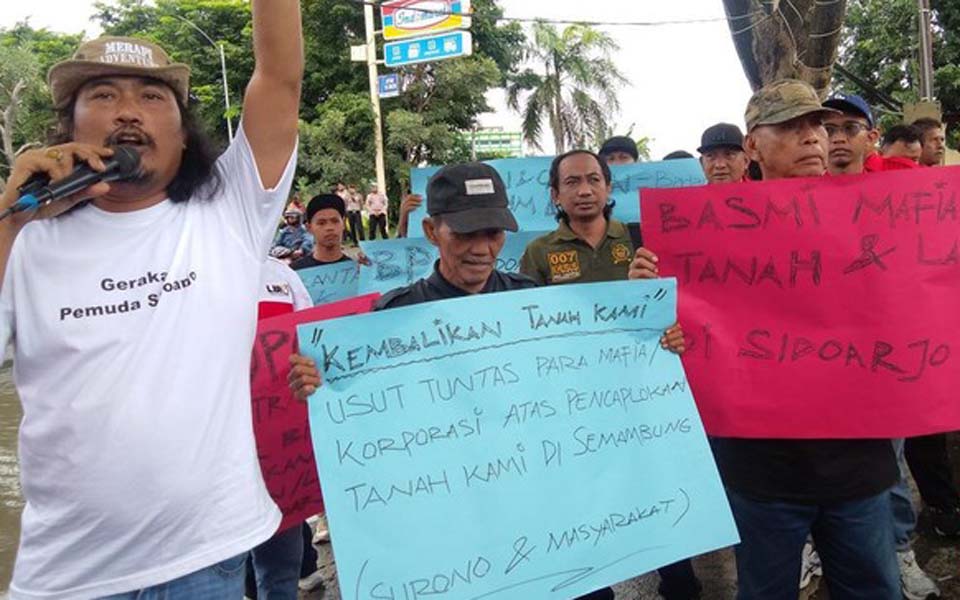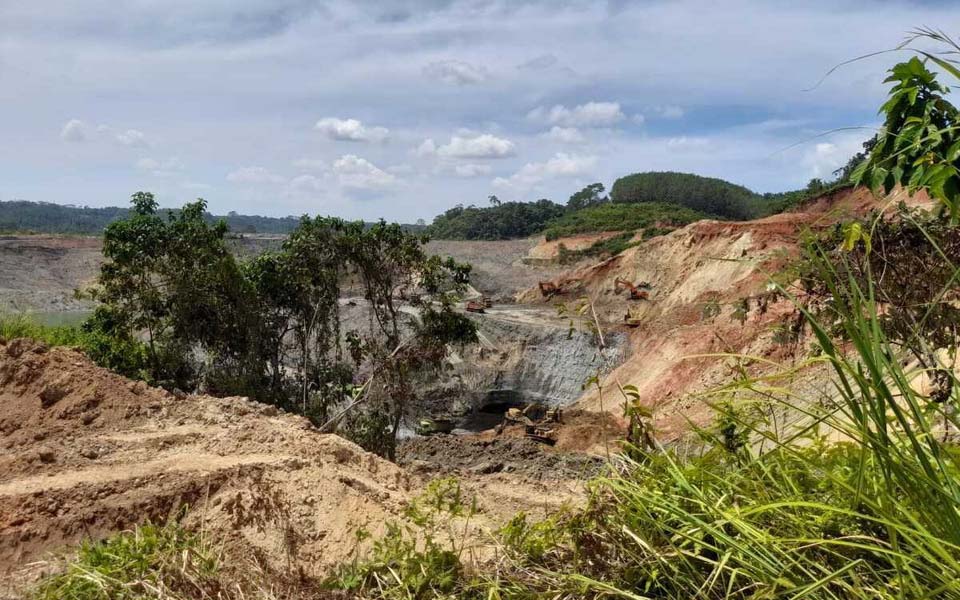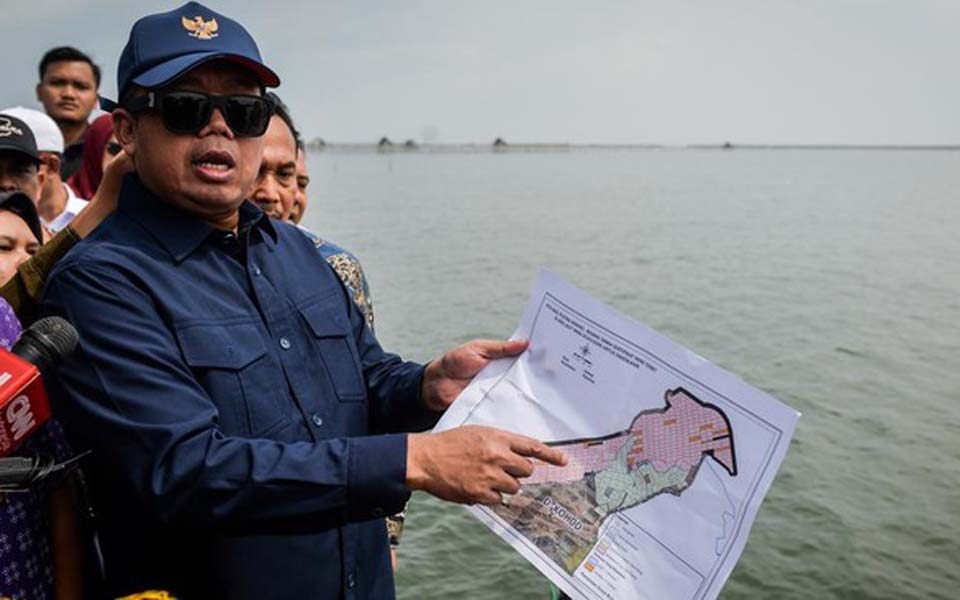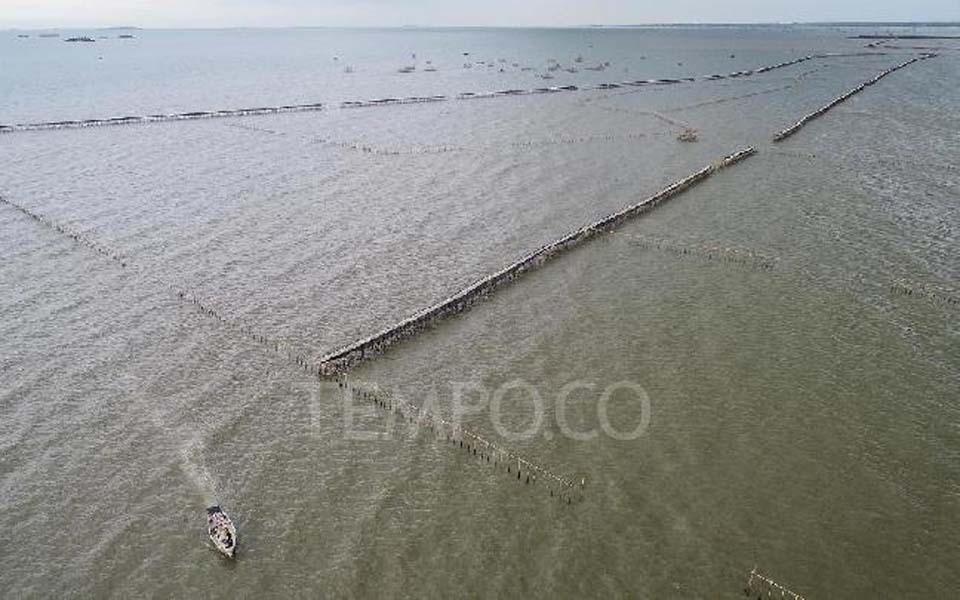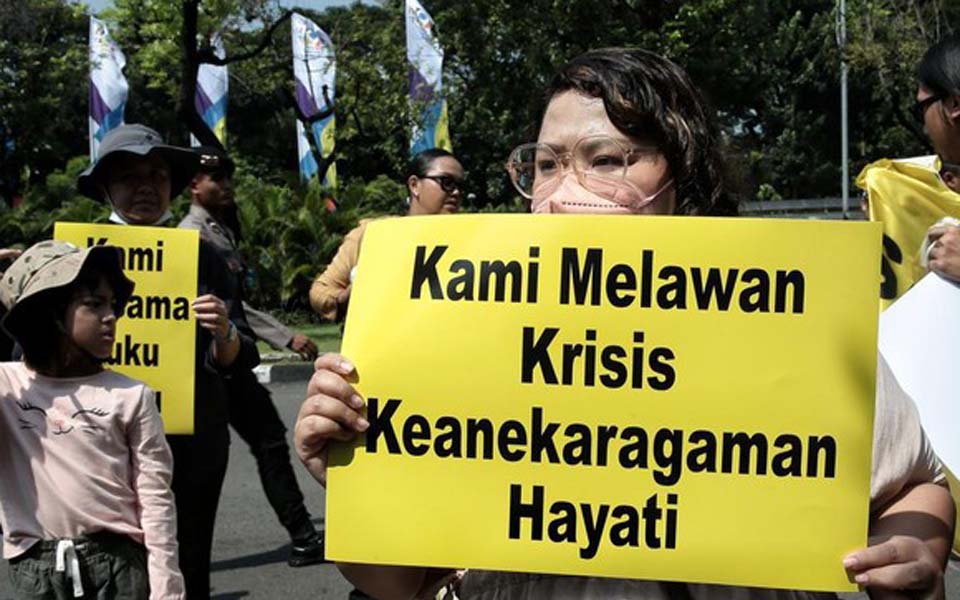Ternate – The North Maluku Indonesian Forum for the Environment (Walhi), the Halmahera Study Forum (FOSHAL), the Indonesian Legal Aid Foundation (YLBHI) and Trend Asia have revealed the adverse effects caused by nickel downstreaming in the country of kings.
As is known, downstreaming is the government program initiated by President Joko Widodo or Jokowi through Law Number 3/2020 on Amendments to Law Number 4/2009 on Mineral and Coal Mining (Minerba), which requires the mining industry to carry out downstreaming, which is none other than providing added value to mining products.
The issue of downstreaming has again been echoed in the lead up to the 2024 elections, such as in the second vice presidential debate when Widodo's eldest son, Gibran Rakabuming Raka, endlessly mentioned the issue of downstreaming.
Based on the data, North Maluku has three downstream nickel ore processing industrial areas. Two others are also operating, namely Harita Nickel on Obi Island, South Halmahera, and the PT Indonesia Weda Bay Industrial Park (IWIP), which is integrated with PT Weda Bay Nickel (WBN) in Weda, Central Halmahera.
Meanwhile in Buli, East Halmahera, in 2024 there are plans to build an electric battery vehicle component factory that is being initiated by the LG consortium and the state-owned Indonesian Battery Consortium (IBC).
"These three areas have received a red carpet from the government with their designation as National Strategic Project (PSN). [And as if] that's not quite enough, the government has given preferential treatment to these nickel downstream industrial areas, namely by designating them as National Vital Objects, and making it so these areas are tightly guarded by TNI [Indonesian military] and Polri [Indonesian police] officers", revealed North Maluku FOSHAL campaign and advocacy division head Julfikar Sangaji in a press release received by the Halmahera Post on Monday January 29.
Rising poverty
Sangaji said that the downstreaming of nickel, which is so relied upon and praised by the government, is actually killing the environment and making local people even poorer in the midst of the interlinking of natural resources.
The presence of nickel processing industries in North Maluku, he continued, is a product of the downstreaming policy that has been touted by the government since 2015 and is claimed to have succeeded in boosting North Maluku's economy.
"North Maluku's economy has indeed grown based on statistical figures for the second quarter of 2023, namely reaching 23.89 present. North Maluku holds the title of the region with the highest economic growth out of all provinces in Indonesia, even far exceeding the national economic growth rate. But strangely, this economic growth is not in line the with poverty rates which are still categorised as high", he said.
Sangaji explained that based on data from the North Maluku Central Statistics Agency (BPS), the number of people categorised as poor in North Maluku as of March 2022 was 79.87 thousand people, then in September 2022 it rose to 82.13 thousand people, and in March 2023 it rose again to 83.80 thousand.
"That means, the downstream nickel industry that is being built and monitored, and the aggressive launching of operations in North Maluku actually does not provide economic benefits to local people, especially residents who live around downstream areas, precisely those who have lost their sources of economic production, such as agricultural land, gardens and fishing areas", he explained.
Massive environmental damage
According to Sangaji, nickel mining activities in North Maluku have created massive environmental damage, environmental damage that is not just on land but also in coastal areas and the sea.
He cited as examples that between November and December 2023 there were two environmental incidents that were considered related to nickel downstreaming policies, namely changes in the color of sea water in the coastal areas of Garaga Island, the Obi Islands, South Halmahera, and in coastal areas and the sea in Maba District, East Halmahera.
"Changes in sea water with a brownish red appearance at these two locations are suspected to be due to the nickel industry", he said.
Halmahera, he said, is the largest island in the Maluku Islands, which has become a race course for bulldozers owned by mining companies over the last two decades, and dredging activities that are devastating Halmahera Island, which experienced a very sharp increase in 2018.
"Nickel ore mining is not only taking place in Halmahera, but is targeting small islands such as Gee Island, Pakal Island, Gebe Island and Mabuli Island, which were already devastated, including islands in the Obi Island group which have suffered the same fate", he said.
Sangaji said that this is despite the fact that small islands have high ecological vulnerability if mined. This is because the recovery capacity of small islands from mining exploitation is slower. These islands are also the main source of livelihood for local residents, so mining not only causes environmental damage, but also triggers social conflicts between residents.
Uncontrolled deforestation
Nickel downstreaming, according to Sangaji, as found in the North Maluku FOSHAL study, directly results in uncontrolled deforestation.
"Nickel ore mining is preceded by land clearing activities or the clearing of an area, therefore it is absolutely impossible for there not to be forest cover loss. Especially in the three locations which are currently surrounded by [companies with] nickel mining business permits (IUP)", he explained.
"Like in East Halmahera, there are 19 permits with a total concession area of 101,047 hectares, while in Central Halmahera there are 13 permits with a total concession area of 10,390 hectares. Meanwhile, in South Halmahera there are 15 permits with a total concession area of 32,236 hectares. For the nickel IUP, they annex two administrative areas at once, namely the East Halmahera and Central Halmahera areas, there are four permits with a total concession area of 70,287 hectares", he explained.
Forest cover loss, he said, predominantly occurs in mining operational areas. Global Forest Watch spatial analysis data shows that from 2001 to 2022, Central Halmahera has lost 26.1 thousand hectares of tree cover, which is equivalent to a 12 percent decrease in tree cover since 2000, and the equivalent of 20.9 megatons (Mt) of carbon dioxide equivalent (CO2e) emissions.
Sangaji revealed that in East Halmahera, from 2001 to 2022, 56.3 thousand hectares of tree cover had been lost, which is equivalent to an 8.9 percent decline in tree cover since 2000, and the equivalent of 44.5 megatons of carbon dioxide equivalent emissions.
"Meanwhile in South Halmahera from 2001 to 2022, 79.0 thousand hectares of tree cover has been lost, which is equivalent to a 9.9 percent decrease in tree cover since 2000, and the equivalent of 62.9 megatons of carbon dioxide equivalent emissions," he said.
Polluted water
Walhi North Maluku Mining Advocacy Manager Mubaliq Tomagola added that based on the results of their research from March to April 2023 titled Status of Water Quality and Marine Biota Health in the Waters of Weda Bay and Obi Island, they concluded that there are indications that the water in the Weda Bay and Obi Island areas has suffered from pollution and pollution levels have accumulated in marine biota such as shellfish and fish.
“Fish targeted for consumption have been exposed to heavy metals. Heavy metals are toxic and can endanger local communities. The same situation has also occurred in the waters of Buli Bay, East Halmahera", said Tomagola.
According to Tomagola, these three locations are areas close to nickel downstream industrial areas, such as Harita Nickel, PT IWIP and the nickel mining operational area of PT Aneka Tambang (ANTAM).
So he continued, the condition of waters and marine biota where there are indications of pollution and exposure to heavy metals is suspected to be because of ongoing nickel downstream industry and mining activities.
"Nickel downstreaming also causes direct damage to rivers such as the Akejira and Ake Kobe rivers which extend past the settlements of the Woekop, Worjerana, Kulo Jaya and Lukulamo villages in Central Weda, Central Halmahera, where the water looks very reddish brown in colour indicating that the water is contaminated with nickel ore from excavated soil", he said.
Tomagola said that the change in the color of the water in the two rivers began in 2018 and they remain cloudy to this day.
"Contamination of the water with nickel mining ore means that residents' access to the two rivers has disappeared, even though originally the river flow was a source of clean water to meet all the household needs of local residents", he said.
He said that nickel mining operations such as PT WBN which are located upstream of the river are strongly suspected to be the cause of the contamination of the water and the change in colour from clear to reddish brown. Apart from PT WBN, PT Tekindo Energi is also suspected of contributing to the muddy color of the river water.
In fact it is not just these two rivers, the Sageyan River in Sagea Village, North Weda, Central Halmahera also suffered a similar fate.
"The river flow that is connected to this karst area also often shows changes in the colour of the water which appears reddish brown even though there is no rain in the area", he explained.
He also revealed that incidents of river damage, as recorded by Walhi North Maluku and is related to downstreaming, has also occurred in the Sangaji River, Maba, East Halmahera and the Toduku River in Obi, South Halmahera.
He said that the impact of nickel downstreaming also meant that residents in Kawasi Village, Obi, South Halmahera had to be evicted from their home villages. Harita Nickel has built a new residential area which they call an eco-village.
"However, what was done by Harita was nothing other than taking away the Kawasi village residents' living space where they lived", he said.
‘Green economy'
Trend Asia campaigner Novita Indri meanwhile said that the downstreaming industrial areas of the nickel industry have been given a seal of approval as part of the "green economy" agenda as a solution of the climate crisis, but still depend on coal-fired power plants (PLTU) as their energy foundation.
"The coal PLTU in the Harita nickel industrial area in Obi and PT IWIP in Weda continue operating all the time, non-stop with the PLTU chimney stacks spewing combustion emissions into the air, which can worsen air quality and cause disease in humans, especially ISPA [acute repertory infections]", said Indri.
Indri said that at PT IWIP, for example, the existing PTLU coal generating capacity is 6,560 MW with plans to add as much as 760 MW more, so the total capacity will reach 7,320 MW.
In addition to this, he continued, the recorded cases of ISPA around the area has risen. Data from a number of media sources showed that in 2020 cases of people with ISPA in Lelilef stood at 434 people while in 2022 it rose to 1,100.
Likewise also is the issue of using state security forces to overcome resistance from residents who reject facilities designated as a Vital National Object in Central Halmahera, North Maluku, which was also considered repressive.
"The repressive acts carried out represent a real portrait of violations against the constitutional rights of citizens, namely the state should be present to provide protection to its citizens not vice versa", he said.
According to Indri, the actions taken clearly violate internal police provisions, one of which is the Police Chief Regulation Number 7/2012, which requires members of the national police to act professionally and uphold human rights and the right to hold activates expressing an opinion in public.
"In addition to this, the police must also avoid acts of violence, persecution, harassment and violating other human rights", he said.
A number of civil society organisations have also offered recommendations on these impacts, one of which is encouraging the next government or elected president to downstream commodities that are cultivated by communities such as cloves, copra, nutmeg and other spices, as well as marine wealth such as fish.
This is seen as a solution that can boost the economy of local residents while ensuring environmental sustainability. The government must also restore crisis areas, especially those caused by the nickel downstreaming policy.
[Translated by James Balowski. The original title of the article was "Sejumlah Organisasi Sipil Ungkap Dampak Buruk Hilirisasi Nikel di Maluku Utara". Sub-headings added by translator.]









